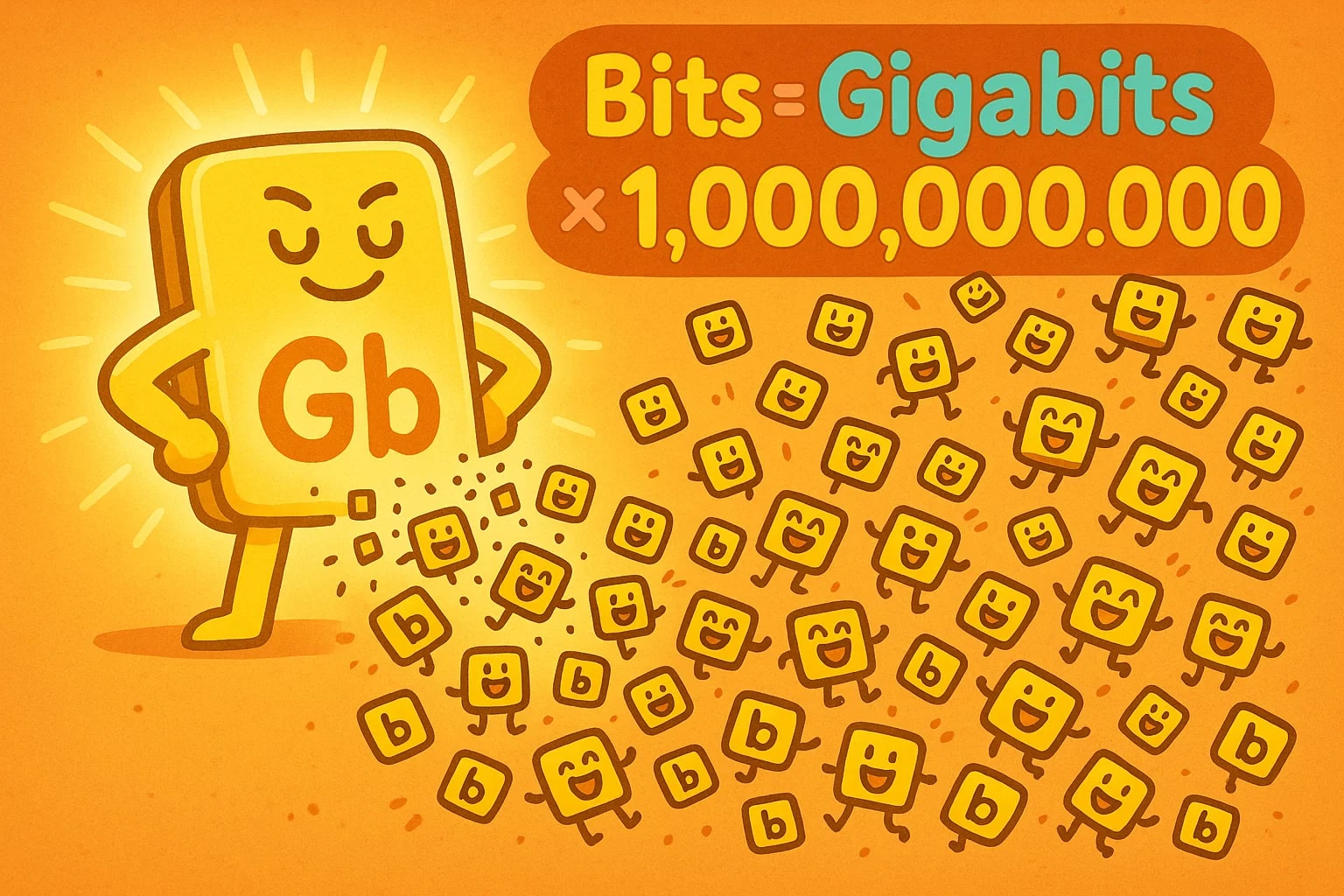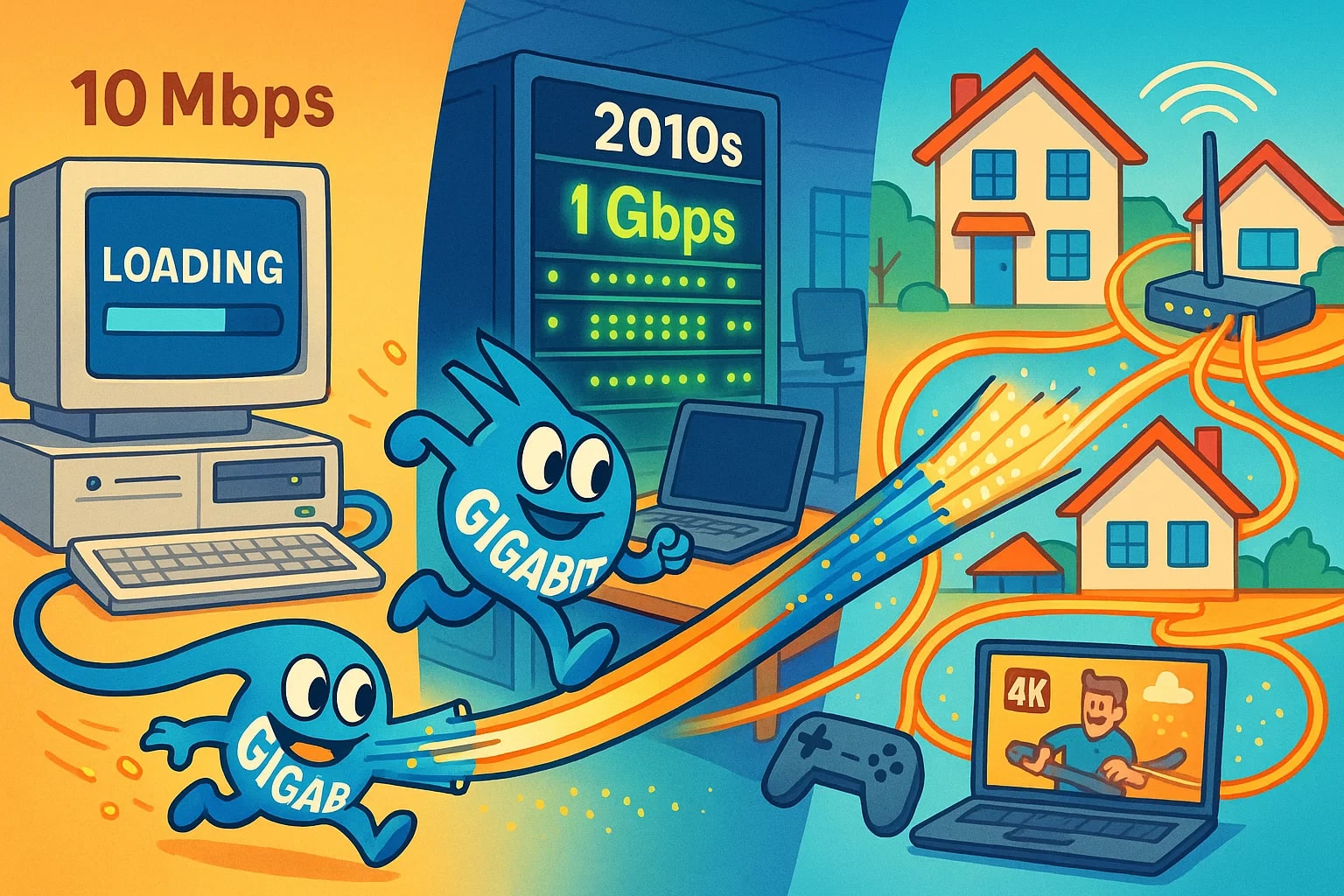gigabit to bit – How to convert Gbit to bit
When measuring digital speeds or large-scale data transfer, you’ll often see the term gigabit — especially in internet plans and networking equipment. But beneath every gigabit is a vast number of individual bits, the smallest unit of digital data. Whether you're benchmarking speeds or calculating capacity, converting gigabits (Gbit) to bits is a simple but essential step.
Here’s how to make the conversion and why it’s so widely used in tech today.

What is a gigabit (Gbit)?
A gigabit is a unit of digital data equal to 1,000,000,000 bits (based on the decimal SI system). It’s commonly used in telecommunications and data transfer rates. For example, a 1 Gbps internet connection can move one billion bits per second.
You’ll commonly see gigabits in:
-
Internet speed packages (e.g., 1 Gbps fiber)
-
Ethernet network standards
-
Cloud data transfer reports
-
Router and modem specifications
What is a bit (b)?
A bit is the most basic unit in digital communication — representing a binary value of 0 or 1. Every file, message, and signal you interact with starts at the bit level. Bits are used in data transmission, file encoding, and system instructions.
While bits alone seem small, they scale into the billions when working with gigabit-level systems.
How to convert gigabit to bit
This conversion is direct:
1 gigabit = 1,000,000,000 bits
So the formula is:
bits = gigabits × 1,000,000,000
A broadband service offers speeds of 2.5 Gbps. That means:
2.5 × 1,000,000,000 = 2,500,000,000 bits per second
A data center processes 18 gigabits of traffic from a server cluster:
18 × 1,000,000,000 = 18,000,000,000 bits
An Ethernet port rated at 10 Gbit transfers:
10 × 1,000,000,000 = 10,000,000,000 bits every second
Need more conversions? Use the Data Storage Converter or explore more digital tools from our full Conversion tools page.
Did you know?
-
1 Gbps internet can theoretically download an entire 1 GB file in just 8 seconds — because 1 byte = 8 bits.
-
10 Gigabit Ethernet (10GbE) is standard in high-speed enterprise networks and data centers — that’s 10 billion bits per second.
-
In 2021, average global internet speeds passed 100 Mbps, but countries like South Korea and Singapore have residential speeds reaching 1 Gbps and beyond.
-
Streaming platforms like Netflix or YouTube automatically adjust bitrate (in bits per second) to match your connection — converting gigabits to smooth video.
-
Fiber-optic networks often operate in gigabits — making the gigabit-to-bit conversion crucial in signal integrity and timing analysis.
From the speed test to the server rack – where gigabits take over
Back in the early 2000s, a 10 Mbps connection felt fast. But as video streaming, gaming, cloud storage, and large-scale backups became normal, the tech world shifted toward gigabit speeds.
In 2010, Gigabit Ethernet became mainstream — replacing the older 100 Mbps standard in business and high-performance environments. At the same time, ISPs started offering fiber-optic internet at speeds of 1 Gbps, and suddenly users had to rethink how fast a billion bits per second really was.
Today, gigabit speeds are not only common in office and home networks — they're a baseline in server rooms, content delivery networks, and even smart homes. Whether it’s downloading a 4K movie, uploading massive video projects, or syncing virtual machines, gigabit to bit conversions are baked into every layer of modern connectivity.

Just multiply by a billion
It doesn’t get much simpler:
bits = gigabits × 1,000,000,000
Use this conversion when measuring traffic flow, calculating transfer time, or working with any device or service labeled in Gbps. Want help with more conversions? Visit the Data Storage Converter or try any of Jetcalculator’s Conversion tools to keep your data clear and your decisions faster.

